Siling Feng
A Pluggable Common Sense-Enhanced Framework for Knowledge Graph Completion
Oct 06, 2024Abstract:Knowledge graph completion (KGC) tasks aim to infer missing facts in a knowledge graph (KG) for many knowledge-intensive applications. However, existing embedding-based KGC approaches primarily rely on factual triples, potentially leading to outcomes inconsistent with common sense. Besides, generating explicit common sense is often impractical or costly for a KG. To address these challenges, we propose a pluggable common sense-enhanced KGC framework that incorporates both fact and common sense for KGC. This framework is adaptable to different KGs based on their entity concept richness and has the capability to automatically generate explicit or implicit common sense from factual triples. Furthermore, we introduce common sense-guided negative sampling and a coarse-to-fine inference approach for KGs with rich entity concepts. For KGs without concepts, we propose a dual scoring scheme involving a relation-aware concept embedding mechanism. Importantly, our approach can be integrated as a pluggable module for many knowledge graph embedding (KGE) models, facilitating joint common sense and fact-driven training and inference. The experiments illustrate that our framework exhibits good scalability and outperforms existing models across various KGC tasks.
From Semantics to Hierarchy: A Hybrid Euclidean-Tangent-Hyperbolic Space Model for Temporal Knowledge Graph Reasoning
Aug 30, 2024Abstract:Temporal knowledge graph (TKG) reasoning predicts future events based on historical data, but it's challenging due to the complex semantic and hierarchical information involved. Existing Euclidean models excel at capturing semantics but struggle with hierarchy. Conversely, hyperbolic models manage hierarchical features well but fail to represent complex semantics due to limitations in shallow models' parameters and the absence of proper normalization in deep models relying on the L2 norm. Current solutions, as curvature transformations, are insufficient to address these issues. In this work, a novel hybrid geometric space approach that leverages the strengths of both Euclidean and hyperbolic models is proposed. Our approach transitions from single-space to multi-space parameter modeling, effectively capturing both semantic and hierarchical information. Initially, complex semantics are captured through a fact co-occurrence and autoregressive method with normalizations in Euclidean space. The embeddings are then transformed into Tangent space using a scaling mechanism, preserving semantic information while relearning hierarchical structures through a query-candidate separated modeling approach, which are subsequently transformed into Hyperbolic space. Finally, a hybrid inductive bias for hierarchical and semantic learning is achieved by combining hyperbolic and Euclidean scoring functions through a learnable query-specific mixing coefficient, utilizing embeddings from hyperbolic and Euclidean spaces. Experimental results on four TKG benchmarks demonstrate that our method reduces error relatively by up to 15.0% in mean reciprocal rank on YAGO compared to previous single-space models. Additionally, enriched visualization analysis validates the effectiveness of our approach, showing adaptive capabilities for datasets with varying levels of semantic and hierarchical complexity.
Enhanced-rate Iterative Beamformers for Active IRS-assisted Wireless Communications
Dec 16, 2022Abstract:Compared to passive intelligent reflecting surface (IRS), active IRS is viewed as a more efficient promising technique to combat the double-fading impact in IRS-aided wireless network. In this paper, in order to boost the achievable rate of user in such a wireless network, three enhanced-rate iterative beamforming methods are proposed by designing the amplifying factors and the corresponding phases at active IRS. The first method, called generalized maximum ratio reflection (GMRR), is presented with a closed-form expression, which is motivated by the maximum ratio combing. To further improve rate, maximize the simplified signal-to-noise ratio (Max-SSNR) is designed by omitting the cross-term in the definition of rate. Using the Rayleigh-Ritz (RR) theorem and the fractional programming (FP), two enhanced methods, Max-SSNR-RR and Max-SSNR-FP are proposed to iteratively optimize the norm of beamforming vector and its associated normalized vector. Simulation results indicate that the proposed three methods make an obvious rate enhancement over Max-reflecting signal-to-noise ratio (RSNR) and passive IRS, and are in increasing order of rate performance as follows: GMRR, Max-SSNR-RR, and Max-SSNR-FP.
Pilot Optimization and Channel Estimation for Two-way Relaying Network Aided by IRS with Finite Discrete Phase Shifters
Oct 28, 2021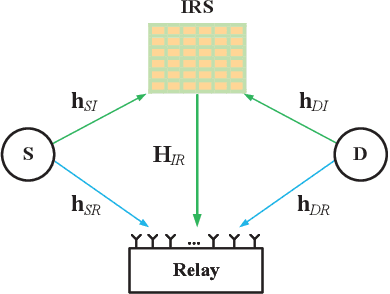
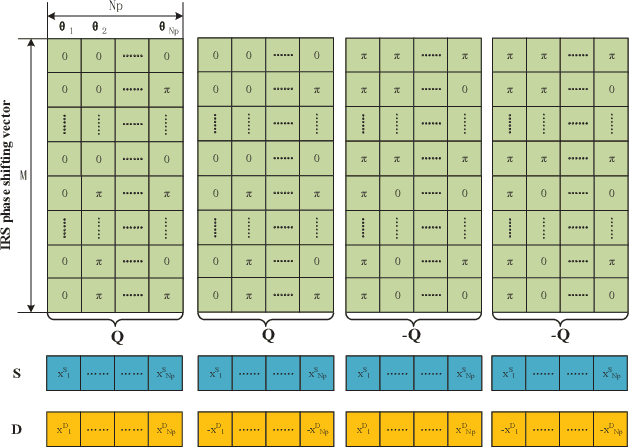
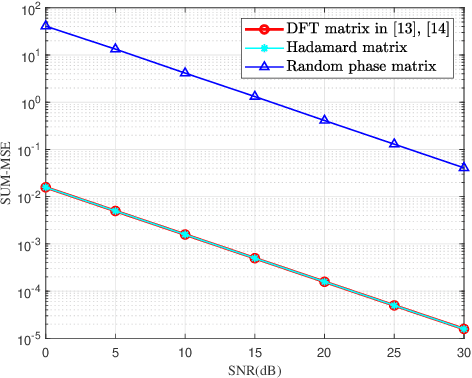
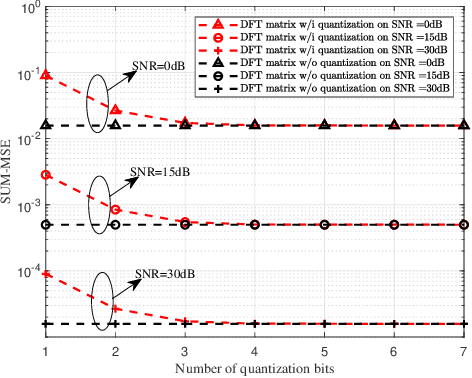
Abstract:In this paper, we investigate the problem of pilot optimization and channel estimation of two-way relaying network (TWRN) aided by an intelligent reflecting surface (IRS) with finite discrete phase shifters. In a TWRN, there exists a challenging problem that the two cascading channels from source-to-IRS-to-Relay and destination-to-IRS-to-relay interfere with each other. Via designing the initial phase shifts of IRS and pilot pattern, the two cascading channels are separated by using simple arithmetic operations like addition and subtraction. Then, the least-squares estimator is adopted to estimate the two cascading channels and two direct channels from source to relay and destination to relay. The corresponding mean square errors (MSE) of channel estimators are derived. By minimizing MSE, the optimal phase shift matrix of IRS is proved. Then, two special matrices Hadamard and discrete Fourier transform (DFT) matrix is shown to be two optimal training matrices for IRS. Furthermore, the IRS with discrete finite phase shifters is taken into account. Using theoretical derivation and numerical simulations, we find that 3-4 bits phase shifters are sufficient for IRS to achieve a negligible MSE performance loss. More importantly, the Hadamard matrix requires only one-bit phase shifters to achieve the optimal MSE performance while the DFT matrix requires at least three or four bits to achieve the same performance. Thus, the Hadamard matrix is a perfect choice for channel estimation using low-resolution phase-shifting IRS.
DOA Estimation Using Massive Receive MIMO: Basic Principles, Key Techniques, Performance Analysis, and Applications
Sep 01, 2021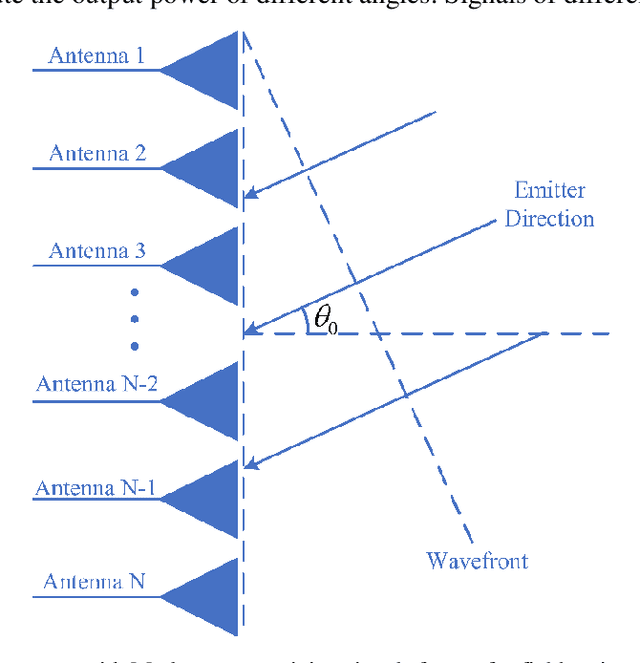

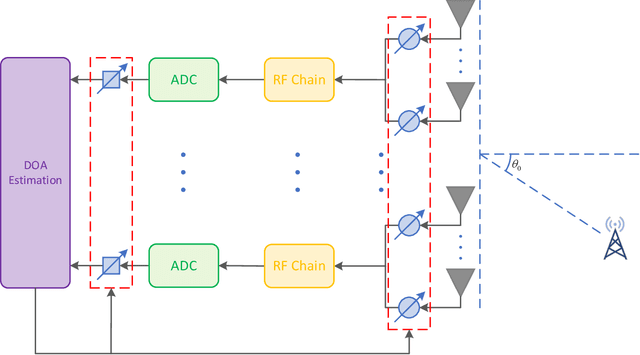

Abstract:As massive multiple-input multiple-output (MIMO) becomes popular, direction of arrival (DOA) measurement has been made a real renaissance due to the high-resolution achieved. Thus, there is no doubt about DOA estimation using massive MIMO. The purpose of this paper is to describe its basic principles and key techniques, to present the performance analysis, and to appreciate its engineering applications. It is anticipated that there are still many challenges in DOA estimation using massive receive MIMO, such as high circuit cost, high energy consumption and high complexity of the algorithm implementation. New researches and breakthroughs are illustrated to deal with those problems. Then, a new architecture, hybrid analog and digital (HAD) massive receive MIMO with low-resolution ADCs, is presented to strike a good balance among circuit cost, complexity and performance. Then, a novel three-dimensional (3D) angle of arrival (AOA) localization method based on geometrical center is proposed to compute the position of a passive emitter using single base station equipped with an ultra-massive MIMO system. And, it can achieve the Cramer-Rao low bound (CRLB). Here, the performance loss is also analyzed to quantify the minimum number of bits. DOA estimation will play a key role in lots of applications, such as directional modulation, beamforming tracking and alignment for 5G/6G.
 Add to Chrome
Add to Chrome Add to Firefox
Add to Firefox Add to Edge
Add to Edge